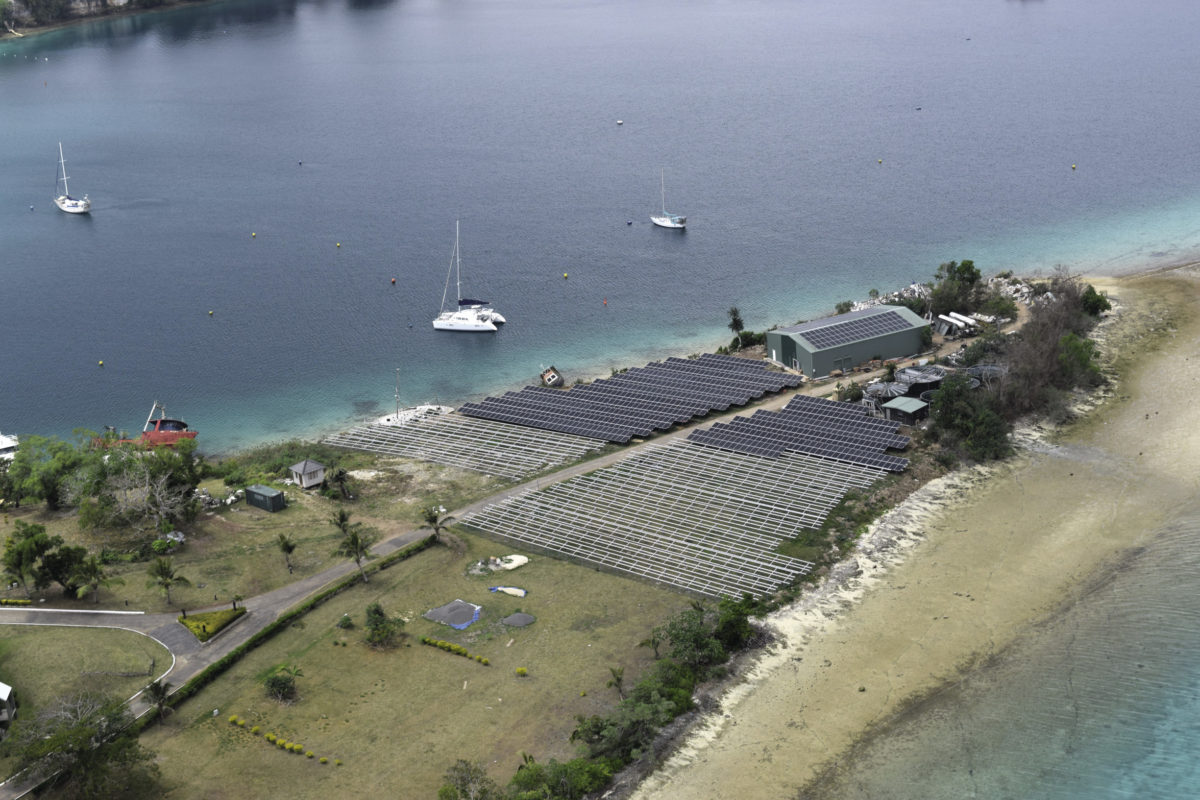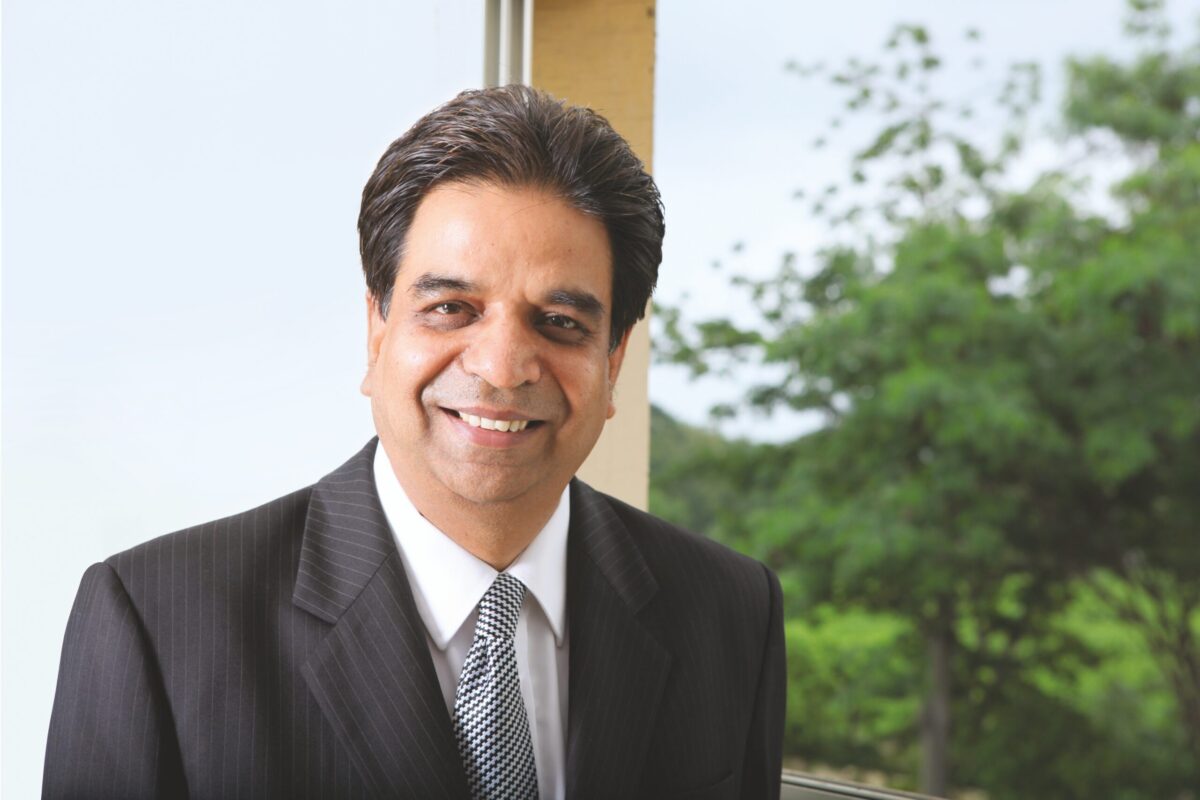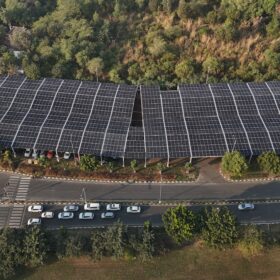Over 80% of the population living in Pacific Island Countries (PIC) have access to electricity, with electricity access being around 80% in rural areas, according to the World Bank. A large part of this access, around 80%, is provided by diesel generators using imported fuel, which costs around USD 6 billion annually. This situation is due to the dispersed geographical nature of the island states and the prohibitively high cost of providing grid connectivity to far-flung islands. The result is that residents of these countries face high electricity costs, which can be up to three times the average bill of consumers in the US.
Building self-reliance in the energy sector through increased capacity of renewable energy-generated electricity is the way out of this issue for these countries. It will not only transition them to clean energy, but also greatly strengthen economic resilience. Many of these countries have hydropower potential, which they are already using to a good extent. But an area with reasonably high potential and low utilization is solar energy. Developing solar energy generation capacity in the PICs faces a range of issues, such as lack of technical capabilities and skilled workforce, challenging geographical conditions, weak regulatory and policy frameworks, and underdeveloped capital markets, all of which contributes a lack of access to the required finance.
While globally the solar sector has started seeing significantly improved mobilization of investment, along with increased uptake of solar, and there are now a range of innovative models for financing, many of these are not applicable in their present form to the PICs. In the case of the PIC economies, they have relatively lower energy demand and growth projections compared to countries where the bulk of energy investments are directed. As a result, there is a limited number of private sector actors and private sector financing.
Furthermore, with the dispersed population and diesel generator-based connectivity, there is a greater need for stand-alone, smaller-scale projects. These face several challenges in terms of required skills, capacities, business models, regulations than the more mature and developed markets. Considering these aspects, and that financing for a technology is largely dependent on maturity levels, as well as the local sectoral and country context, there are several barriers to finance for solar in PICs. However, given the reality of the PICs being amongst the most highly vulnerable countries to climate change, they are getting more attention and preference for grants, and other supportive finance mechanisms. This provides the opportunity to design appropriate, long-term impact projects for such investments, which can change the economic trajectory of these countries.
In general, the types of finance required to scale technologies can be broadly categorized:
- Readiness finance for demonstrating viability and exploring novel solutions
- Risk mitigation finance for market development
- Investment finance for commercialization and mainstreaming
It is notable that solar project investments in most developed and emerging markets are of the third category, investment finance, driven almost entirely by the private sector based on commercial aspects, while in other markets, such as Africa, risk mitigation finance is required. It provides an extra layer of comfort for market development and draws in private sector investors.
In the case of PICs, it may be even more complex due to the need for stand-alone solar energy systems and mini-grids, which to be viable for larger investments would require aggregation at a sectoral or programmatic level to become feasible. Revision of existing regulations would also be required. Thus, the investment required in this case may be in the nature of ‘readiness finance’ accompanied by ‘hand-holding’ in the initial stages for a larger number of applications that have been categorized as investment finance in other markets. Also, payment guarantees and additional assurance through infrastructure insurance, or guarantee against currency fluctuations, may be needed to mobilize private sector investments.
This approach is what the developmental organizations have been taking for deploying many adaptation-related projects and evolving new viable models, but in the case of solar they have transitioned away from it in the belief that the sector has evolved into commercially viable projects. However, in the Least Developed Countries, including the PICs, innovative financing is still needed. It is important to note that a large part of this readiness finance support would be to build local technical skills and institutional capabilities, which are often the critical missing elements in developing markets to enable such projects. Support is required to devise viable business models for investments, which might aggregate several small projects, or service-based operating models, such as pay-per-use. Financing would also be required to re-design existing product systems to create appropriate and innovative solutions given the lack of available land and the extreme weather events these countries frequently face. Thus, solutions such as floating solar and agro-photovoltaics, may need to be explored.
The International Solar Alliance (ISA) has been working across the PICs, deploying specific solar applications, such as rooftop solar, lights, and solar boats, building capacities through targeted training and conducting feasibility studies for innovative infrastructure solutions. To accelerate the deployment of solar in PICs, financing solutions formed through collaborative efforts, which are able to address these wide-ranging aspects by providing a level of grant support and attracting private international and local investments through instruments, such as payment guarantees, is the need of the hour.
Author: Tamiksha Singh – She is a Strategy Planning Specialist at the International Solar Alliance.
The views and opinions expressed in this article are the author’s own, and do not necessarily reflect those held by pv magazine.
This content is protected by copyright and may not be reused. If you want to cooperate with us and would like to reuse some of our content, please contact: editors@pv-magazine.com.








By submitting this form you agree to pv magazine using your data for the purposes of publishing your comment.
Your personal data will only be disclosed or otherwise transmitted to third parties for the purposes of spam filtering or if this is necessary for technical maintenance of the website. Any other transfer to third parties will not take place unless this is justified on the basis of applicable data protection regulations or if pv magazine is legally obliged to do so.
You may revoke this consent at any time with effect for the future, in which case your personal data will be deleted immediately. Otherwise, your data will be deleted if pv magazine has processed your request or the purpose of data storage is fulfilled.
Further information on data privacy can be found in our Data Protection Policy.